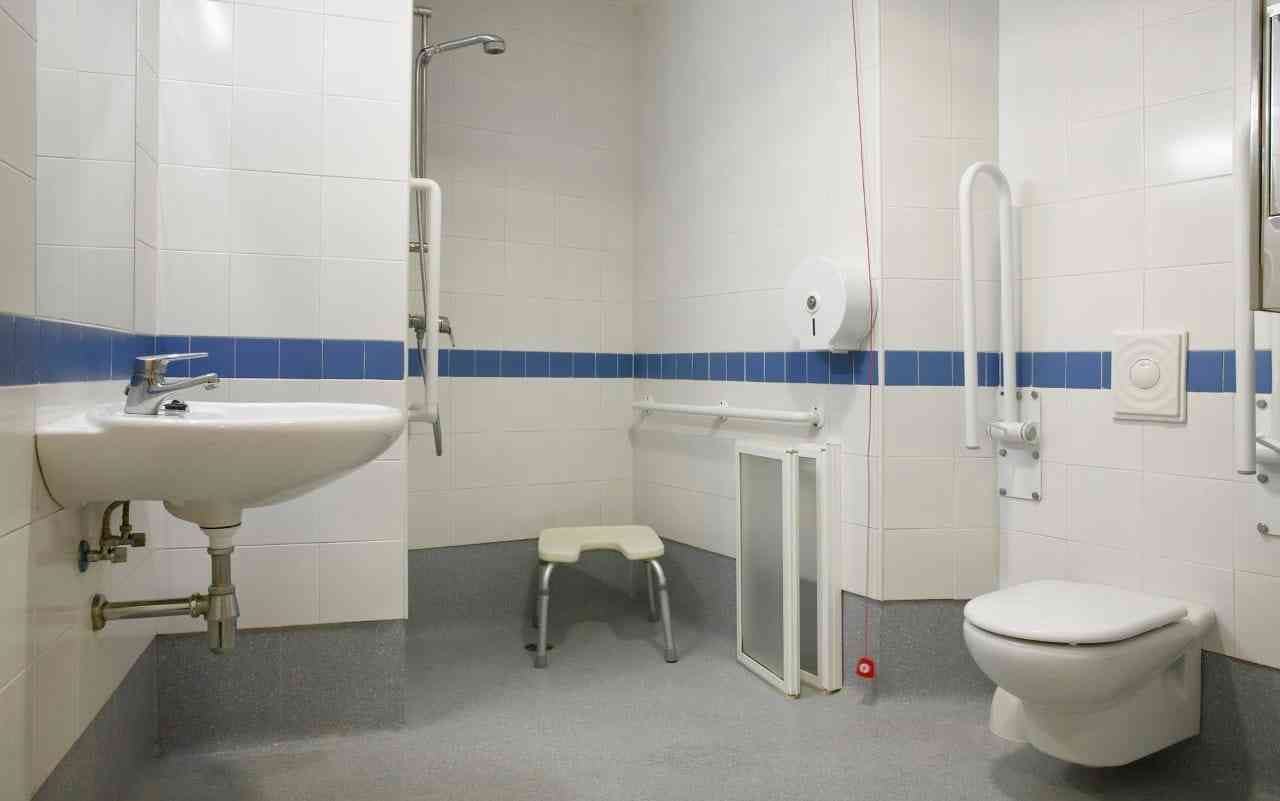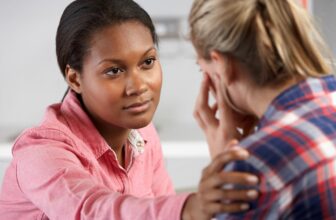
Many people in the United States live with depression. In fact, according to the CDC, 4.7% of Americans have regular feelings of depression. And statistics from the 2020 National Survey on Drug Use and Health revealed that about 21 million Americans have had at least one major depressive episode before.
Depression is a very serious disease that can affect you mentally and physically. It can even lead to suicide.
The good news is that it is treatable. There are various treatments available that can help patients fight the disease. One such treatment is exercise.
Some studies have shown that exercise can help people fight depression. For example, a review published in the Journal of Neurology in 2019 revealed that exercising can help improve the symptoms of depression when used together with standard depression treatments. A recent study, a large review of 1039 trials and 128,119 participants that was published in February 2023 in the British Journal of Medicine suggests that exercise is more effective than medications to manage depression and other mental health diseases.
“While I agree that physical activity is vital for mental health, I disagree that it should be the only frontline treatment for depression,” says Supatra Tovar, Psy.D., RD, a clinical psychologist who is also a registered dietitian and accredited fitness expert in Pasadena, California. “Taking a holistic approach, utilizing a combination of measures to combat depression is the best thing to do.”
This article contains affiliate links, which means we may receive a small commission at no added cost to you. As an Amazon associate, we earn from qualifying purchases.
Ways Exercise Can Help You Fight Depression
However, it’s a good thing to add exercise to your depression treatment plan for a number of reasons.
Exercise can give you psychological benefits. “Psychologically, exercise has been found to increase the release of endorphins, which are natural chemicals in the brain that help to relieve pain and improve mood,” says Bruce Bassi, MD, a psychiatrist at Telepsychhealth in Jacksonville, Florida. “Exercise can also help to regulate the sleep cycle, which can be disrupted in people with depression. Getting enough sleep is important for overall mental health and can help to reduce symptoms of depression,” he says.
Exercise can give you physical benefits as well. “Physically, exercise can improve many areas of fitness and give you benefits, such as improved strength, higher energy, less fatigue, and better sleep,” says Ada Tang, Ph.D., a physiotherapist, Associate Professor, and Assistant Dean, Rehabilitation Science Graduate Programs at Mcmaster University.
Exercise can also boost feel-good hormones in your body and that can make you feel better. “Low dopamine levels are linked to depression. Exercise gives a feeling of “pleasure” for the next 24 hours by increasing the release of dopamine,” says Michael Dermansky, senior physiotherapist at MD Health. “As you do more exercise, dopamine builds up over time in the body. As you exercise more, over time you tend to increase serotonin and dopamine hormones. People that exercise consistently to manage their mood generally report a higher level of satisfaction, feel more capable mentally, and feel they have achieved a lot more,” he adds.
Exercising is the last thing you want to hear about when you are struggling with depression. Sometimes, even getting out of bed can be hard, let alone motivating yourself to go for a walk or run.
A Common Challenge for Depression Patients: Motivating Yourself to Exercise
It can be very hard for depressed patients to motivate themselves to exercise for a number of reasons.
“Depression can sap a person's energy and motivation, making it hard to find the drive to exercise,” says Dr. Bassi. “Moreover, depressed individuals often experience negative self-talk and feelings of worthlessness, which can lead to a lack of confidence in their ability to exercise. Furthermore, physical symptoms such as fatigue, sleep disturbance, and body aches, make it uncomfortable to engage in physical activity,” Dr. Bassi adds.
“People living with depression have nervous systems that are “dysregulated” (meaning the nervous system stays more persistently in a “sympathetic” state rather than being balanced by the parasympathetic system), most likely in a “freeze” state,” explains Tawny Kross, Ph.D., a licensed physiotherapist at Kross Centered Care in N.C. “Most of the body and nervous system's energy is focused on processing the subconscious' worries and concerns, and the idea of moving the body beyond basic activities of daily living — survival — can feel like a monumental task,” he adds.
“It’s also possible that side effects of your medications may be causing your lack of motivation,” says David Rakofsky, Psy.D., a licensed clinical psychologist in Chicago. “Consult with your doctor to rule this out. Mood alteration can be the result of sudden changes in medications regimen. Ask yourself: Have I been on antidepressants but now take them inconsistently or have just stopped? Is this event the result of withdrawal? Do I need to consult my medical provider to revisit my dosage and consider an increase or a change of medications?”
How to Motivate Yourself to Exercise
Dr. Bassi recommends that you remind yourself that doing something small is better than doing nothing at all. He advises that you start with something small, a small goal. “For example, if you find it hard to go out and walk, have a small goal such as putting on your walking shoes,” he says.
“Don't think of the walking exercise as a chore that someone told you to do, but find something you intrinsically appreciate about walking – the fresh air, nature, checking out birds, trees, new scenery, or clearing your mind, etc.,” Dr. Bassi says. “In addition, finding a friend you can walk with can also help,” he adds.
Dr. Tang agrees that social support can make it easier for you to find the desire to exercise. “Finding support from others can also help with exercise goals,” she says. “Social support can take different forms, from a walking partner or an exercise buddy to just having someone to check in with about exercise goals.”
You may also consider using technology to help you. “For those that might find it helpful, exercise/fitness apps or reminder alarms can be useful,” says. Dr. Kross. Another strategy he recommends is habit stacking. “For example, sometimes I have clients pair quick exercise routines with their meals (“go for a quick 5-minute walk right after you eat something.”),” he says.
Having a mantra is another thing that may help you, according to Dr. Rakofsky. “Your mantra should be ‘just for today.’ Make a promise to commit to some form of exercise just for today. Try the fitness class, walk around the block, or do some lunges across your living room. There is a reward, a feeling of relief, for the sometimes uncomfortable work you are doing and you can feel it almost immediately,” he says.
Another strategy you can use is to use routine things you have to do every day to remind you to exercise. “It’s helpful to find an existing routine behavior we do every day to attach to this new exercise, like brushing your teeth. You can use the behavior of brushing your teeth to remind yourself to do 10 minutes of exercise,” says Dr. Tovar.
I Have Depression. What Should I Consider Before I Start Exercising?
“Some important factors to consider include the activity itself (For example, Do I like walking or jogging? Swimming or weight training?), the format (Do I like group fitness classes or exercising on my own?), and the environment (Do I prefer indoor or outdoor activities?),” says Dr. Tang.
It’s also advisable to take a physical activity questionnaire before you start any exercise program, according to Dr. Tang. “It can help guide whether you need to seek further assessment or guidance from a doctor, physical therapist, or other health or fitness professional,” says Dr. Tang.
Start with Small Exercise Goals
“Setting goals and action plans are a great place to start. It helps to develop goals that are SMART: SPECIFIC, MEASURABLE (to know when a goal has been reached), ACHIEVABLE (to be realistic for success), RELEVANT, TIME-LIMITED (goals set in small bites will be easier to achieve),” says Dr. Tang. “An example of a SMART goal might be: I will go for a 20-minute walk, 4 times this week: Monday, Tuesday, and Thursday over lunch hour, and Saturday morning at 10:00 am,” she says.
“I suggest for people to start very small. It is important to be realistic as to how many minutes you can handle in a week,” says Dr. Tovar. “In addition, it is better to undershoot rather than overshoot. Any type of exercise for any length of time that feels easy to achieve is a good start. For someone with depression, if 10 minutes of light stretching is all you can handle, do only that,” she says.
“The most important element is to start,” Dermansky says. “Start small, keep things simple, set realistic goals, and pace yourself. Regular exercise has the best long-term effect on mood, not getting there faster. Consistency is key,” he says.
Recommended Foods to Support Your Anti-Depressant Exercise Regimen
According to the National Institute of Mental Health, changes in appetite are one of the symptoms of depression.
“[When you're depressed] you may not pay attention to your diet,” says Dr. Tovar. However, according to Dr. Tovar, improving your diet is one of the best ways to lower depression.
“When we are in a depressed state, we usually lack the amount of glucose the body needs to help sustain itself and to lift our moods,” she says.
“I encourage people to make sure they consume something containing a wide variety of fresh fruits and vegetables before they begin exercising. For some, it might be easier to make or buy a fruit and vegetable smoothie to ensure they are getting a large quantity of both. Whole grains like oatmeal can also be a wonderful way to energize before a workout,” says Dr. Tovar.
And depending on the intensity of your workout, you may need to eat some animal or plant protein in order to build muscle, according to Dr. Tovar. She adds that people tend to consume too much protein, so it’s important that you ask your doctor or dietitian what quantity is suitable for you before you start exercising. “I also discourage overconsumption of fat, since it is very difficult for your liver to assimilate,” she says.
How to Make It Easier to Start Exercising
“Build physical activity into your day, such as taking the stairs instead of the elevator, parking a little farther from your destination, or holding walking meetings,” says Dr. Tang. “Building in these physical activity ‘snacks' throughout the day can help break up long periods of time sitting and can be beneficial to your health.”
And then you’ll have to take a step. “The simple act of getting out of bed, making your bed, or walking for even five minutes has been clinically shown to relieve depressive feelings,” says Dr. Tovar. “The first step is the hardest, to break from the feeling of doing nothing. Like pushing a car on a flat road, that first push is going to be the hardest, but once momentum is on your side the next steps are easier (though not easy).”
How to Prepare Your Body Before You Start Exercising
“It is helpful to do breathing exercises to help regulate the nervous system and to help you visualize the task positively to make it easier for you to do it to achieve your goals,” Dr. Kross says.
And after you’ve done the breathing exercises, it’s advisable for you to warm your body.
“Dynamic warm-up can include walking or slow jogging, or gentle, dynamic stretching that starts with smaller ranges of movement before gradually moving into larger movements as the body warms up,” says Dr. Tang. “Be sure to warm up the upper and lower body, as well as the neck and trunk, focusing on the parts of the body that will be used during exercise. For example, runners will perform whole-body warm up but focus more on the lower body. Warming up can help reduce the risk of injury,” she says.
Indoor Exercises to Help You Fight Depression
If you have depression, consider these expert-recommended indoor exercise tips.
Deep Breathing
“Deep breathing exercises can help reduce stress and anxiety,” says Mike Hamlin, NSCA, CSCS, a personal trainer at Everflex Fitness. “Deep breathing can help you destress if you tend to overthink your problems. The more we focus on something positive or at least neutral (like breathing), the more we aren't thinking of the hard parts of life,” Mike adds.
How do you do this exercise? “Inhale deeply through the nose, hold for a few seconds, then exhale slowly through the mouth,” Mike says.
Resistance Exercise
“This exercise involves building muscle and strength in different muscle groups of the body. For the beginner and the person that has no access to equipment, using body weight only can be a good place to start. This can be simple like air squats; planks; going up stairs; and push-ups,” Dr. Kross says.
How can this exercise help lift your mood? “Strength and muscle growth can help with the improvement of negotiating daily life functions. To that end, some people might find that mentally and emotionally encouraging,” Dr. Kross adds.
When is the best time to do these exercises? “These are perfect for first thing in the morning. Starting your day with something challenging can be a great way to prepare yourself mentally for the rigors of life so that you feel mentally strong to deal with life's inevitable difficulties,” Hamlin says.
Walk Indoors
“A quick walk is always easy and beneficial; more and more research now shows that getting the heart rate up for just a few minutes is beneficial,” Dr. Kross says. He adds that functional movements (movements that a person naturally makes throughout the day) can also be something to add. “For example, if someone is getting up from their chair to go to the bathroom, I would suggest they go from sitting to standing as an exercise for a few repetitions before they actually go to the bathroom,” he suggests.
Stretching
“Stretching is a wonderful way to relieve tension in sore muscles, often tight because of depression inactivity,” says Dr. Tovar. “Stretching the tight neck, shoulder, and back muscles can be very helpful in relieving anxiety and lifting your mood.”
Calisthenics and Cerebellar Exercises
Calisthenics is one kind of exercise that you can do easily. “There are a variety of calisthenics videos on YouTube that are completely free,” Dr. Bassi says. “You can start a video and then just follow along. Also, cerebellar exercises for balance are found to help with focus and concentration. You can search for these, which are also free and require no exercise equipment,” he adds.
Strength Training Exercises
“Exercises that strengthen the major body parts will be effective in getting you working and having a physical benefit,” says Dermansky. “This may include push-ups, wall squats, bridging exercises, lunges, and calf raises,” he says.
“Both resistance and cardio training have the same hormonal benefit for depression, so if you can’t go out for a walk or do a run, these exercises can be just as effective,” he adds.
Mat Pilates
Pilates exercises can help relieve depression symptoms, according to a small study that was published in March 2020 in the Complementary Therapies In Medicine.
“Mat Pilates is a wonderful mind-body exercise that combines strength training with tension-relieving stretching while simultaneously focusing on controlled breathing,” says Dr. Tovar. “Pilates has been shown to have positive effects on mental health by lowering anxiety, worry, tension, depression, anger, and fatigue,” she adds.
Mini Trampoline Rebounding
Looking for an exercise you can enjoy? One fun exercise is to bounce on a mini trampoline.
“Mini Trampoline (rebounding) exercise is very helpful because the act of jumping helps to release endorphins, the feel-good hormone that produces a calm and happy state of mind. In addition, rebounding can help to drain your lymphatic system and loosen sore muscles,” says Dr. Tovar.
Outdoor Exercises That Can Relieve Depression
There are added benefits you will reap if you exercise outdoors instead of staying indoors.
A small study which was published in March 2016 in Mental Health and Physical Activity suggested that people with depression felt more active and experienced better moods when they engaged in outdoor exercise than when they did indoor exercises.
But why does exercising outdoors give these benefits? “Exercising outdoors can help boost Vitamin D levels, and help lower stress levels, making it feel less strenuous than indoor exercises – as anyone who’s ever tried running on a treadmill will know!” says Smriti Joshi, a licensed clinical psychologist at Wysa.
Here are some exercises you can do outdoors to help you.
Hiking
“Hiking is a wonderful way to get out into nature. Studies have shown that walking or hiking out in nature has an anti-anxiolytic effect and can be depression relieving. The Japanese even coined the term “Forest Bathing” to describe the mental health benefits of walking in nature,” says Dr. Tovar.
Ride a Bicycle
Cycling has many mental health benefits according to a study, which was published in August 2021 in the Journal of the American Planning Association.
“Cycling is a wonderful low-impact form of exercise that has been shown to have numerous mental health benefits, such as increasing mental health and life satisfaction,” says Dr. Tovar.
Aerobic Exercises
“Aerobics of mild to moderate intensity has been shown to increase mood, reduce anxiety and decrease depression,” says Dr. Tovar.
For example, a review published online in October 2018 in the journal Depression and Anxiety found that aerobic exercise significantly reduced depression symptoms.
Walking, jogging, running, swimming, and using cardiovascular gym equipment such as step machines and stationary bicycles, were the exercises used in the study. On average, the study participants engaged in these exercises for 45-minute sessions three times per week.
“Get your heart pumping, and focus your eyes on the beauty or novelty of the world around you,” says Dr. Rakofsky. “Granted, breaking a sweat and soaking up the great outdoors doesn’t sound appealing when you’re feeling listless and down, but exercising releases endorphins, the body’s natural anti-depressants. The sudden rush of these hormones can be the thing that flips your mood around.”
Practice Yoga Together with Other Treatments to Fight Depression
Yoga is another exercise that can help you to fight depression, especially when you do it in addition to standard treatments, according to a study published in May 2019 in the American Family Physician.
“Eastern traditional forms of exercise like tai chi, qigong, yoga, and even the western exercise form of Pilates, are classified as mind-body exercises because they all employ the active use of breath work, mindfulness, and focusing on the flow of energy while performing the exercises. All these factors have been shown to be effective in lifting mood and reducing depression by calming the sympathetic nervous system and activating the parasympathetic nervous system,” says Dr. Tovar.
How can yoga help lift your mood? “As with all gentle exercise forms, endorphins, the feel-good chemical hormone that promotes contentment and well-being, are released,” says Dr. Tovar.
Easy Yoga Poses to Do When You're Depressed and Your Energy Levels Are Low
The right yoga technique that can help lift your mood depends on your unique circumstances, according to Brandt Passalacqua, C-IAYT and E-RYT500 certified yoga instructor and yoga therapist. “People who are feeling depressed and struggling to motivate themselves to get up and go out may find that slow movements that open up the body may help you release tension and help them gain more energy,” Brandt says.
Brandt adds, “There are many poses that can be performed seated or lying down if you’re feeling low on energy to start, such as Corpse Pose, Legs Up the Wall Pose, or Seated Forward Bend.”
Corpse Pose
To practice Corpse Pose:
- Lie face-up on your yoga mat.
- Spread your arms and legs in a starfish shape so that your limbs are parted but comfortable. Leave your hands open with the palms facing up and allow your feet to drop gently to either side. If needed, support your head or neck with a pillow or cushion.
- Pay attention to how each body part feels, starting with your toes and slowly moving throughout the entire body.
- Stay in this pose for 2 to 10 minutes.
- Release any tension you feel.
Legs Up the Wall Pose
To perform a Legs Up the Wall Pose:
- Lie face-up on your yoga mat near a wall with your feet in front of the wall.
- Scoot your buttocks closer to the wall and walk your feet up the wall.
- Keep your feet around hip-width apart.
- Lay your arms comfortably at your sides with the palms facing up.
- Hold this pose for 2 to 10 minutes.
- Release any tension in your arms, legs, or spine.
Seated Forward Bend
To perform a Seated Forward Bend:
- Start by sitting on your yoga mat with your legs straight out in front of you and your toes pointed toward the ceiling.
- Hold your back up straight, then start leaning forward from your hips, stretching rather than hunching your back.
- Reach forward with your hands and walk them out as far as you comfortably can, loosely holding onto your ankles or feet if needed.
- Hold this pose for 1 to 3 minutes.
Brandt recommends that you start out by holding the poses for 20 to 30 seconds, gradually increasing to 1 minute and then 2 minutes if desired. “Stop if you experience pain while performing these poses,” Brandt says.
If you're looking for individual support or group classes, you can search for a certified yoga therapist near you on the International Association of Yoga Therapists (IAYT) website.
What You Should Do After You’ve Finished Exercising
“Cooling down after exercise is also important to help the breathing rate or heart rate and blood pressure back towards resting baseline levels,” says Dr. Tang.
What are some ways you can cool down? “Walking slowly, or slow pedaling on a bike with minimal tension, or gentle stretching, can help,” says Dr. Tang.
How to Organize Fitness Groups If You Feel Lonely Exercising Alone
There are many benefits to exercising with others.
“Group exercise offers the opportunity to socialize with others who share similar interests. It can be a great way to make new friends and build a sense of community. Participants can also provide support and encouragement to each other. We know that people with a strong friendship group are less likely to feel depressed,” says Joshi. “Group exercise can be a fun and enjoyable way to get in shape. Classes often incorporate upbeat music and a sense of camaraderie that can make exercise feel less like a chore and more like a social activity. There’s nothing like a good dance to get the endorphins going,” she adds.
It may feel and look daunting to meet with others to exercise. “Simply asking your friend group to form a weekly exercise pod can be a great way to start,” says Dr. Tovar. “If schedules do not align, there are several exercise groups that can be found through Meetup or Facebook who meet weekly in virtually every exercise form.”
Optionally, you may set up your own exercise group. “If you can’t find what you’re looking for, set up your own group. You could use Facebook, MeetUp, or HeyLo to promote it and find like-minded individuals. Remember that everyone is in it together, so even if you’re nervous, chances are someone else will be too,” Joshi says.
How to Make the Exercise Habit Last
What can you do to develop the habit of exercising regularly?
“Adding positive reinforcement can be very helpful in making the behavior last,” says Dr. Tovar. “After your 10-minute workout, reward yourself with a healthy smoothie, a gold star on your calendar, or anything else that makes you feel good about sticking to your new routine.”
How to Get the Most Out of Exercise with Depression
“Regular exercise has the best long-term effect on mood, not getting there faster,” Dermansky says. “Again, consistency is key. I have too often seen “very keen” participants start with high-intensity exercises for the first week and either lose momentum very fast (after the first week) or injure themselves,” he says.
“At least 3 months of consistent exercise will be much better than 1-2 weeks of intense exercise that will NOT lead to a good long-term outcome,” Dermansky adds.
Don’t Be Too Hard on Yourself When You Have Bad Days
It’s possible you may fail to meet your goals and that may make you feel bad. “Even the most successful athletes have good and bad days and may find themselves unable to follow through with their exercise routines on some days and for someone struggling with depression this could happen more frequently,” says Joshi. “On these days be kind and compassionate to yourself and don’t be overly self-critical. And then try and pick up where you left off the next day or next week,” she says. “It’s not as catastrophic or bad as your mind may tell you. Remember Thoughts are not Facts,” she adds.
“When people first start an exercise program, they may see more dramatic improvements in fitness at the beginning that will plateau over time,” says Dr. Tang. “This might feel discouraging but it doesn’t mean that exercise isn’t helpful anymore. It just may be time to progress the exercise program to match current fitness levels,” she says.
Is It OK to Rely Solely on Exercise to Manage Depression?
No. Although it may help you feel better, you must use it together with other strategies, Dr. Tovar cautions. “Have multiple forms of depression relief in your toolbox to combat slumps in energy and will,” she says.
“For example, if a person’s energy is low, they may benefit less from exercise as it may be stress-inducing rather than stress relieving. That is when some mindfulness or meditation, seeing a therapist, focusing on stretching or breathing, or even getting a massage might help,” she says. “The more tools you have in the toolbox, the better equipped you will be at handling life’s ups and downs and the increase or waning of your energy.”
Does exercise help you cope with depression?
Share your experience with our safe and supportive mental health community in the comments.
Photo by HayDmitriy via Deposit Photos
Isaac Nunoofio is a freelance health, wellness, fitness, nutrition, and medical communications writer and copywriter for hire. He has over 10 years of experience writing health, wellness, fitness, nutrition and healthcare articles. He is a Google-certified digital marketer, Content Marketing Institute-certified content marketer, and very knowledgeable about SEO. He helps bloggers, websites, magazines, health professionals, hospitals/clinics, B2C, and B2B healthcare companies and brands to create health content.













